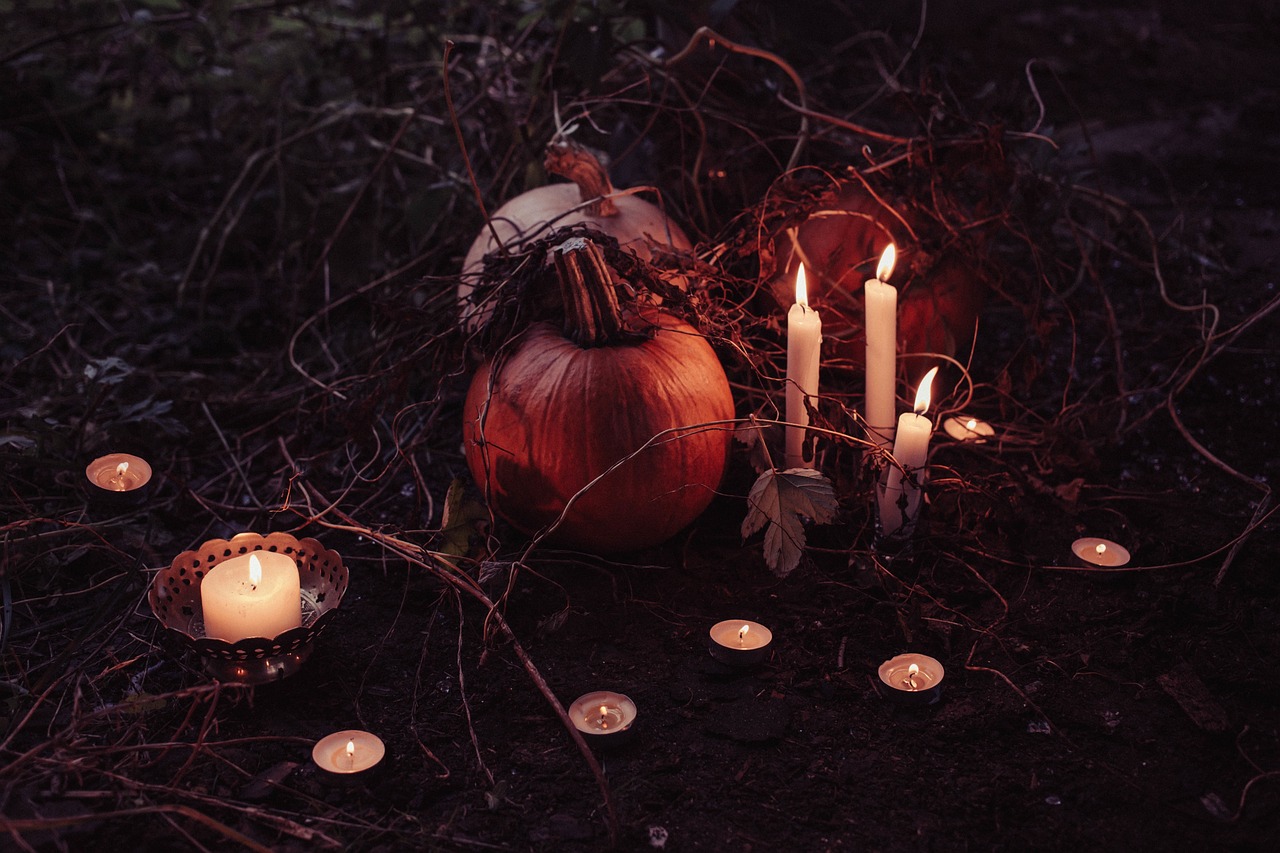How to Treat Rhizosphaera Needle Cast: A Step-by-Step Guide
Treating Rhizosphaera needle cast involves several steps. Begin by properly diagnosing the disease, then prune affected branches, improve air circulation, and apply fungicides if necessary. Additionally, maintaining tree health through proper watering and nutrition can help prevent future outbreaks.
Rhizosphaera needle cast is a fungal disease that primarily affects spruce trees, especially the Norway spruce. This disease is characterized by the premature needle drop, starting from the inner branches and moving outward. As needles turn yellow and drop off, the overall health of the tree declines. Understanding how to manage and treat this condition is crucial for preserving the beauty and longevity of spruce trees.

The causative agent of this disease, Rhizosphaera kalkhoffii, thrives in moist conditions. It often spreads in areas with high humidity or where trees are densely planted. Symptoms usually manifest in late summer or early fall when needle drop becomes noticeable. If left untreated, severe infestations can lead to extensive tree damage or even death.
Understanding Rhizosphaera Needle Cast
To effectively treat Rhizosphaera needle cast, it is essential first to understand its lifecycle and symptoms. The fungus can survive on fallen needles and in the soil, making it necessary to adopt a comprehensive approach to treatment.
Symptoms of Rhizosphaera Needle Cast
The symptoms of Rhizosphaera needle cast typically include:
- Yellowing of needles, particularly on lower branches.
- Needles dropping prematurely, usually starting from the inside of the tree.
- Browning of needles at the tips or along edges.
- Presence of purple or brown bands on the needles, indicating fungal infection.
Conditions Favoring Disease Development
Certain environmental factors can promote the spread of Rhizosphaera needle cast:
- High humidity levels and prolonged wet periods.
- Poor air circulation due to overcrowded trees.
- Inadequate sunlight reaching inner branches.
- Stress from drought or nutrient deficiencies.
Effective Treatment Methods

Treating Rhizosphaera needle cast requires a combination of cultural practices, physical interventions, and chemical treatments. Each method plays a role in managing the disease effectively.
Cultural Practices
Cultural practices are preventive measures that can reduce the incidence of Rhizosphaera needle cast:
- Pruning: Remove affected branches to improve air circulation within the tree canopy.
- Spacing: Ensure adequate spacing between trees to enhance airflow and reduce humidity around foliage.
- Watering: Water deeply during dry spells to promote tree health, but avoid overhead watering which can encourage fungal growth.
Pesticide Application
If cultural practices are insufficient, chemical control may be necessary. Fungicides can be effective in managing Rhizosphaera needle cast when applied correctly. It is important to select appropriate products and adhere to application guidelines:
| Fungicide | Application Timing | Notes |
|---|---|---|
| Chlorothalonil | Spring before needle emergence | Repeat every 14 days if conditions are favorable for disease. |
| Propiconazole | Spring and fall | Effective against a wide range of fungal diseases. |
By combining these treatment methods, you can effectively manage Rhizosphaera needle cast and protect your spruce trees from further damage. In the following sections, we will delve deeper into each treatment method and explore additional preventive measures you can take.
Pruning and Cultural Practices

Pruning is a critical aspect of managing Rhizosphaera needle cast. This practice not only helps in removing infected branches but also improves the overall health of the tree by enhancing air circulation and light penetration. When executed properly, pruning can significantly reduce the spread of the disease.
Steps for Effective Pruning
Follow these steps to ensure effective pruning of spruce trees affected by Rhizosphaera needle cast:
- Assess the Tree: Inspect the tree for symptoms, focusing on lower branches where needle drop is usually most pronounced.
- Use Clean Tools: Always use sterilized pruning shears to prevent the spread of pathogens. Wipe blades with alcohol before and after use.
- Remove Affected Branches: Cut back branches that show signs of infection. Make cuts at least 6 inches below visible symptoms to ensure complete removal of the fungus.
- Avoid Over-Pruning: Only remove branches that are necessary. Excessive pruning can stress the tree and make it more susceptible to other diseases.
Improving Air Circulation
Good air circulation is essential in reducing humidity around the tree. Improving airflow can help dry leaves and needles more quickly, which decreases the likelihood of fungal development. Here are some methods to enhance air circulation:
- Spacing Trees: Ensure that trees are planted at appropriate distances apart to allow for airflow between them.
- Thinning Foliage: In densely packed areas, selectively thin out branches to create openings for air movement.
- Removing Underbrush: Clear any low-growing plants or debris around the base of the tree that can obstruct airflow.
Nutritional Support for Trees
Adequate nutrition plays a significant role in maintaining tree health, making it vital for preventing Rhizosphaera needle cast. Trees that are well-nourished are more resilient to diseases and environmental stressors.
Essential Nutrients
Focus on the following nutrients to promote healthy growth in spruce trees:
- Nitrogen: Supports overall growth and green foliage development. Apply a balanced fertilizer in early spring.
- Phosphorus: Encourages root development and enhances resilience against diseases.
- Potassium: Improves overall health and aids in stress tolerance during drought conditions.
Soil Testing
Conducting a soil test is a proactive step in ensuring that your trees receive the right nutrients. A soil test can provide insights into:
- The pH level of the soil.
- The presence of macro and micronutrients.
- Recommendations for amendments based on deficiencies found.
Water Management
Water management is another crucial aspect of treating Rhizosphaera needle cast. Proper hydration supports tree health while avoiding conditions that promote fungal growth.
Watering Techniques
Implement the following watering techniques to ensure trees are adequately hydrated:
- Deep Watering: Water deeply and infrequently to encourage deep root growth. This method helps trees withstand drought conditions better.
- Avoid Overhead Irrigation: Use drip irrigation or soaker hoses instead of overhead watering to keep foliage dry.
- Monitor Soil Moisture: Regularly check soil moisture levels to determine when watering is necessary.
Seasonal Considerations
The timing of watering is also important. During periods of high humidity or rain, reduce watering frequency to prevent excess moisture around the roots and foliage. In contrast, during dry spells, ensure trees receive adequate hydration to support their health.
Pesticide Application Techniques
If cultural practices do not provide adequate control of Rhizosphaera needle cast, applying fungicides may be necessary. It is essential to understand proper application techniques for maximum effectiveness.
Timing and Frequency
The timing of fungicide application is critical. Here are key points to consider:
- Prevention: Apply fungicides before symptoms appear, typically in early spring, as new needles emerge.
- Treatment: If symptoms are noticed, treat again in late spring and potentially in fall depending on weather conditions.
Application Methods
Select proper application methods for the type of fungicide used:
- Spray Application: Use a backpack sprayer or hose-end sprayer to cover foliage thoroughly, ensuring even distribution.
- Drench Application: For soil-applied fungicides, drench the root zone to enhance uptake by the tree.
Implementing these practices will support your efforts in managing Rhizosphaera needle cast effectively, ensuring your spruce trees remain healthy and thriving. In subsequent sections, we will explore more advanced treatments and management strategies to further protect your trees from this persistent threat.

Monitoring and Early Detection
Effective management of Rhizosphaera needle cast hinges on regular monitoring and early detection. By keeping a close watch on your spruce trees, you can identify symptoms before they escalate into severe infestations. This proactive approach is essential for maintaining tree health and reducing the need for extensive treatments.
Signs to Look For
Monitoring your trees involves being aware of specific signs that indicate the presence of Rhizosphaera needle cast. Here are some key symptoms to observe:
- Needle Discoloration: Watch for needles that turn yellow or brown, particularly on lower branches.
- Needle Drop: Note if needles drop prematurely, especially in late summer or early fall.
- Fungal Structures: Look for small black dots on the needles, which are the fruiting bodies of the fungus.
- Tree Stress: Observe any signs of overall tree stress, such as stunted growth or other health issues.
Regular Inspection Schedule
Establishing a regular inspection schedule can help in timely detection of issues. Consider the following guidelines:
- Seasonal Checks: Conduct thorough inspections at least twice a year, ideally in spring and fall.
- After Rainfall: Increase inspections after periods of heavy rain, as moist conditions promote fungal growth.
- Post-Application Monitoring: After applying fungicides, monitor trees for any signs of improvement or new symptoms.
Advanced Treatment Options
In addition to basic management techniques, there are advanced treatment options available for severe cases of Rhizosphaera needle cast. These treatments can provide more comprehensive solutions when conventional methods are insufficient.
Biological Control Methods
Biological control involves using natural organisms to combat fungal infections. This method is environmentally friendly and can be effective in managing Rhizosphaera needle cast.
- Beneficial Fungi: Certain fungi, such as Talaromyces flavus, can outcompete pathogens like Rhizosphaera for nutrients and space.
- Bacterial Treatments: Using beneficial bacteria can help suppress fungal growth by producing substances that inhibit pathogen development.
Soil Amendments
Improving soil health through amendments can enhance tree resilience against diseases. Consider the following soil amendments:
- Compost: Adding organic compost can improve soil structure, increase nutrient availability, and enhance microbial activity.
- Pumice or Perlite: These materials improve soil aeration and drainage, reducing moisture levels around roots.
Integrated Pest Management (IPM)
An Integrated Pest Management (IPM) approach combines various strategies to manage pests and diseases effectively. This holistic method is particularly useful in controlling Rhizosphaera needle cast.
Components of IPM for Rhizosphaera Needle Cast
The components of IPM include the following strategies:
- Regular Monitoring: Continuously assess tree health and environmental conditions that might favor fungal growth.
- Cultural Practices: Adopt practices that promote tree resilience, such as appropriate spacing and proper watering techniques.
- Chemical Control: Use fungicides judiciously, applying them only when necessary based on monitoring results.
- Public Awareness: Educate nearby communities and garden centers about Rhizosphaera needle cast to promote early detection and reporting.
The Role of Technology in Monitoring
The use of technology can enhance monitoring and management capabilities for Rhizosphaera needle cast. Some tools you might consider include:
- Drones: Use drones equipped with cameras to survey large areas and spot infected trees from the air.
- Sensors: Install soil moisture sensors to monitor conditions that could favor disease development.
- Mobile Apps: Utilize apps designed for tree health monitoring to track symptoms and treatment history.
Community Involvement and Education
Community involvement is vital for effective management of Rhizosphaera needle cast. Engaging neighbors and local gardeners can foster a cooperative approach to tree care.
Creating Awareness Programs
Consider organizing workshops or informational sessions to educate your community about Rhizosphaera needle cast. Topics may include:
- The importance of early detection and reporting.
- Best practices for tree care and maintenance.
- The role of healthy ecosystems in preventing disease outbreaks.
Collaborative Efforts
Encourage collaboration among local gardening clubs, municipalities, and tree care professionals. Working together can lead to more effective management strategies and resource sharing.
The successful treatment of Rhizosphaera needle cast relies on a combination of diligent monitoring, cultural practices, advanced treatments, and community involvement. By implementing these strategies, you can significantly improve the health of your spruce trees and protect them from future disease outbreaks. In the next section, we will explore further preventive measures that can ensure long-term tree health and resilience.
Preventive Measures for Long-Term Tree Health
Preventing Rhizosphaera needle cast requires a proactive approach focused on maintaining the health of spruce trees. Implementing consistent preventive measures can significantly reduce the likelihood of disease development and ensure long-term resilience.
Regular Maintenance Practices
Establishing a routine maintenance schedule is essential for tree health. Regular maintenance not only promotes growth but also reduces stress factors that may lead to diseases like Rhizosphaera needle cast. Here are some key practices to incorporate:
- Mulching: Applying mulch around the base of trees helps retain soil moisture, regulate temperature, and suppress weeds that may compete for nutrients.
- Fertilization: Regularly fertilize your trees based on soil test results to provide necessary nutrients, especially nitrogen, phosphorus, and potassium.
- Water Management: Monitor rainfall and adjust watering schedules accordingly. Ensure that trees are adequately hydrated without overwatering, which can lead to root rot and fungal diseases.
Encouraging Biodiversity
Enhancing biodiversity in your garden or landscape can naturally suppress the spread of pests and diseases. Here are some strategies to encourage biodiversity:
- Plant Diversity: Incorporate a variety of plant species in your garden to create a balanced ecosystem that supports beneficial insects and wildlife.
- Native Plants: Use native plants that are well-adapted to your local environment and can thrive with minimal maintenance.
- Beneficial Insects: Attract beneficial insects such as ladybugs and lacewings, which help control pest populations that could stress trees.
Seasonal Care Adjustments
Adapting care techniques according to the seasons can significantly impact tree health. Consider these seasonal adjustments:
- Spring: Focus on fertilization and pruning during spring to promote healthy growth as new needles emerge.
- Summer: Monitor for signs of stress or disease, ensuring adequate watering during dry spells.
- Fall: Prepare trees for winter by mulching and conducting a final inspection to address any issues.
Conclusion
Managing Rhizosphaera needle cast effectively involves a multi-faceted approach that combines monitoring, cultural practices, advanced treatments, and community involvement. By being vigilant and proactive, you can significantly reduce the risk of this disease affecting your spruce trees.
The key takeaways from this guide include the importance of early detection through regular monitoring, the adoption of cultural practices like proper pruning and spacing, and the use of fungicides as necessary. Additionally, fostering community awareness and collaboration can strengthen efforts in managing Rhizosphaera needle cast.
Remember that each tree’s needs may vary based on its environment and health status. Tailoring your approach while remaining flexible is crucial for the best outcomes. With consistent care and attention, your spruce trees can thrive for many years to come, providing beauty and value to your landscape.
By implementing these strategies and remaining aware of potential threats, you can create a healthier environment for your trees, ultimately leading to a lush and vibrant landscape free of the impacts of Rhizosphaera needle cast.
